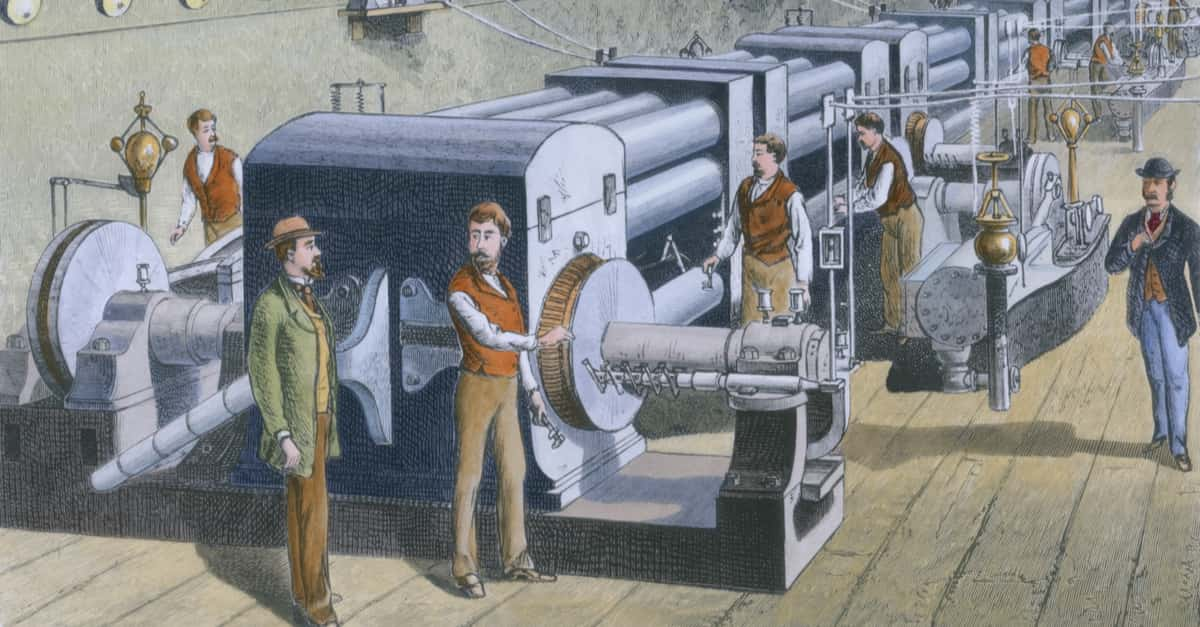In the 21st century, getting the idea of living without electricity is unthinkable; it has become indispensable in our lives, and only in moments of blackouts or power cuts do we become aware of the need for electricity in our lives. That is why electricity is not only a matter for electrical technicians, electrical engineers, physicists, and scientists, it is also a basic part of current human knowledge, and everyone should know the history of electricity.
What is Electricity?
Atoms are made up of a nucleus made up of protons (with a positive electrical charge) and electrons (with a negative electrical charge). The electric charges of the electrons and protons are compensated so that, in principle, an atom is electrically neutral.
The atoms of a body may gain or lose electrons, and when in the nucleus of the atom, there is no balance between protons and electrons. It is when it is electrically charged.
Atoms tend to balance electrically, so an atom with excess electrons passes them to another with excess protons. It is, broadly speaking, this movement of electric charges that we call electric current.
History of Electricity

It started with the ancient Greeks. After the discovery of Miletus, it was not until 1600. that Queen Elizabeth I ordered the physicist William Gilbert to study magnets to improve the accuracy of compasses used in navigation. He became the first to study electrostatics and magnetism and also to apply the term “electron” as a measure of magnetomotive force.
Electric Charge
In 1752, Benjamin Franklin demonstrated the electrical nature of lightning. In 1776, Charles AgustÃn de Coulomb invented the torsion balance with which he accurately measured the force between electric charges and confirmed that this force was proportional to the product of the individual charges and inversely proportional to the square of the distance that separates them. That is why Coulomb is the unit of measurement for Electric Charge.
The Battery

The 19th century was very important in the history of electricity. In 1800, Alejandro Volta built the first electrostatic cell and the battery capable of producing electric current. His inspiration came from the study carried out by the Italian physicist Luigi Galvani. Volt becomes the unit of measure for electric potential (Voltage).
In 1823, Andre-Marie Ampere established the principles of electrodynamics when he concluded that the electromotive force is the product of two effects: Electric voltage and electric current. He experimented with conductors, determining that they attract one another if currents flow in the same direction and repel each other when they flow against one another. From this event, we will obtain the Ampere as the unit of measure for electric current.
Magnetism
In 1831, Michael Faraday, at age 14, was working as a bookbinder, which allowed him the time to read and develop his interest in Physics and Chemistry. Despite his low formal training, he took a fundamental step in developing electricity by establishing that magnetism produces electricity through movement. Farad is the unit of measurement for electric capacitance.
In 1854, the English mathematician William Thomson (Lord Kelvin), with his work on the theoretical analysis of cable transmission, made possible the development of the transatlantic cable. In 1851 he defined the Second Law of Thermodynamics, and later in 1858, he invented the flexible cable. Kelvin is the unit of measurement in measuring absolute temperature.
Light

In 1881, Thomas Alva Edison produced the first Incandescent Lamp with a carbonized cotton filament, one of the most significant steps in the history of electricity. This filament stayed on for 44 hours. In 1882 Edison installed the first electrical system to sell power for incandescent lighting in the United States for the Pearl Street station in New York City. Thanks to the work of great scientists, today we have the opportunity to use electricity as we know it.
Important Years for the Development of Electricity
5th century BC: The Greek philosopher Thales of Miletus discovered the power of attraction that was produced when rubbing amber on a cloth or the skin.
3rd century: Theophrastus, another Greek philosopher, makes the first scientific study of electricity when he discovers that other elements also had this power of attraction.
1790: Alexander Volta built a battery capable of producing direct current applied to different experiments
1820: Faraday observed that when the electric current passes, it produces a magnetic field.
1821: Faraday also enunciated the “Principle of electromagnetic induction: a magnetic field when varying, produces an electric current.” This principle forms the basis of large power plants.
1879: Thomas Alva Edison designed the prototype of an electric light bulb designed to shine for 40 hours.
20th century: It brought with it alternating current, which allowed the transport of electrical energy at a distance and its progressive use in towns and villages.
1905: Albert Einstein wrote four articles where he explained the Brownian motion, the photoelectric effect and developed special relativity and the equivalence between mass and energy.
1911: The Dutch physicist Heike Kamerlingh Onnes made important discoveries in the field of electrical superconductivity
1923: Russian engineer Vladimir Zworykin dedicated his life to the development of television, electronics, and optics
1941: Konrad Zuse’s first functional electronic computer was built
1958: The first integrated circuit was developed, integrating six transistors on a single chip
1970: The first microprocessor was developed
21st century: It is experiencing the beginnings of total interconnection to which telecommunications converge, through all kinds of increasingly faster, more compact, more powerful, and multifunctional devices
Bottom Line

The use and history of electricity changed society completely, starting from a light bulb, lighting to the use of electricity for the operation of industrial process machines, telecommunications, etc.
Its consumption was born with the capitalist countries, which used energy for the operation of household appliances, televisions, computers, among others.
Today in our homes, many objects require a large amount of electrical energy. Although it is very useful and contributes to the evolution of humanity, at some point, it can be harmful. Electricity itself does not harm anyone; the problem is the way it is produced.

